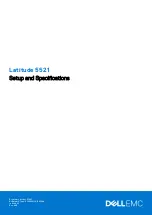
setting of the CSU. You configure this parameter during installation. (For more information,
see the MAX Reference Guide.)Refer to Table D-4 lists CSU specifications.
Note:
During loss of power or whenever the MultiVoice Gateway restarts, a relay closure
returns the T1 PRI signal to the WAN. That is, the T1 PRI line is looped back. However, if the
MultiVoice Gateway is configured for framing-compatible drop-and-insert functionality, all
channels of line #1 are passed to line #2. Note that line #1 and line #2 of a MultiVoice Gateway
expansion module always loop back upon loss of power, regardless of how they are
configured.
T1/PRI cable specifications
The maximum cable distance between the T1/PRI WAN interface equipment and the
MultiVoice Gateway should not exceed 655 feet (200 m) for a MultiVoice Gateway without
CSUs. Measure the line length and record it when you install the MultiVoice Gateway. You
must specify this length when you configure the Line Profile parameters. (For more
information, see the MAX Reference Guide.)
Use only cables specifically constructed for transmission of T1/PRI signals. The cables should
meet standard T1 attenuation and transmission requirements. The following specifications are
recommended:
•
100
Ω
•
Two twisted pairs, Category 3 or better
Table D-4.CSU specifications
Information
Value
CSU Registration
2CZUSA-74421-DE-N
Critical Circuitry Power Source
Dry Loop from local AC power source
Line Capture Frequency
1.544 Mb/s +/- 200 b/s
Line Code
AMI or B8ZS
Line Framing
D4 or ESF
Line Input/Output Impedance
100 Ohms +/- 5%
Received Signal Level Range
DSX-1 level to -27.5 dB
Transmitted Signal Level
DSX-1 level into 100 Ohms
Line Buildout
0.0, 7.5, 15.0, or 22.5 dB
Pulse Density and Consecutive Zeros
Enforcement
In accordance with requirements of
AT&T Pub 62411
Line Loopback (LLB) Set Inband Code
(10000) repeating binary pattern
Line Loopback (LLB) Reset Inband Code
(100) repeating binary pattern
















































